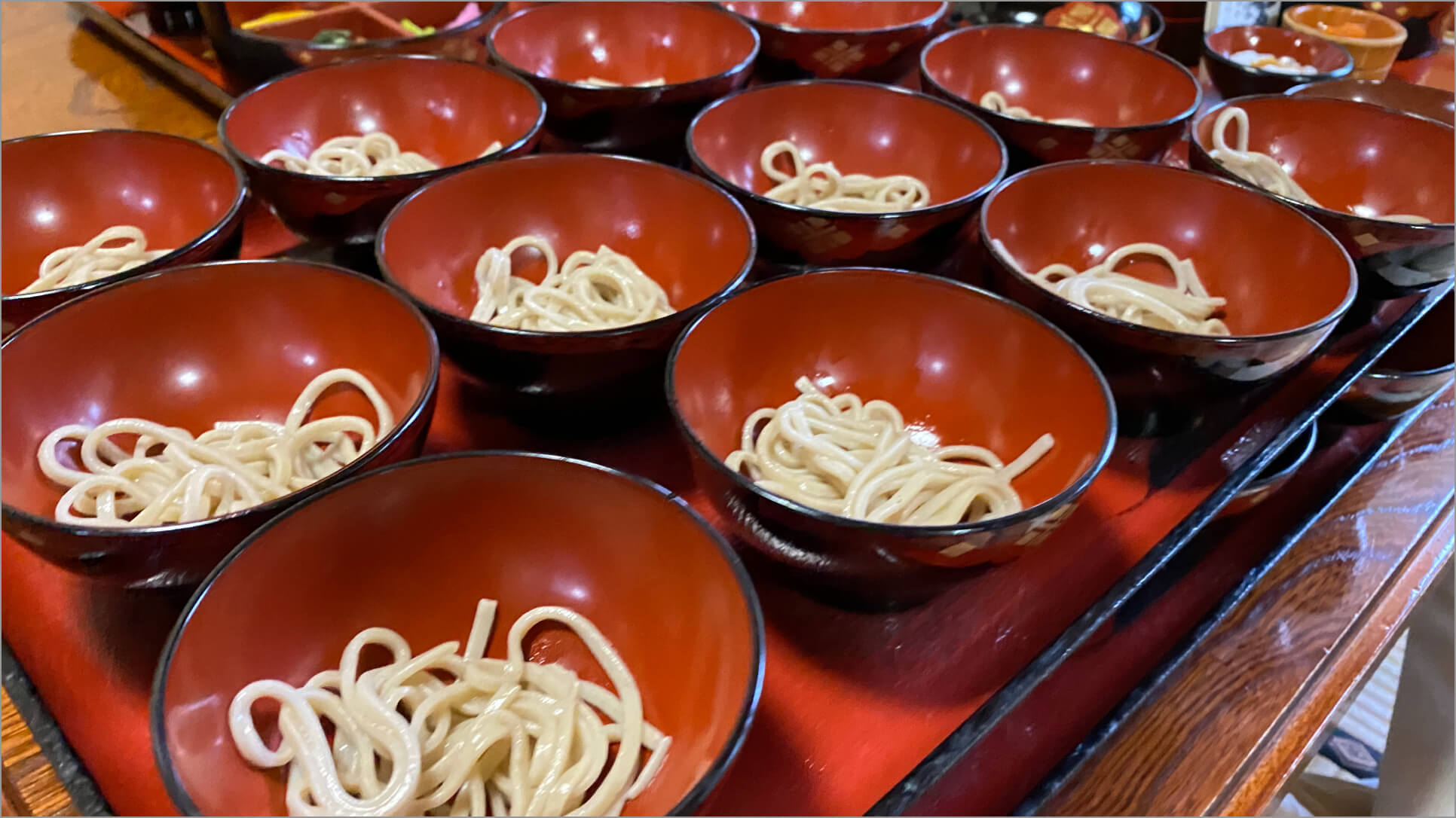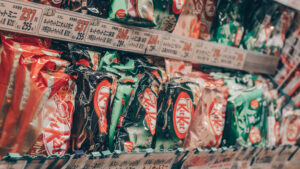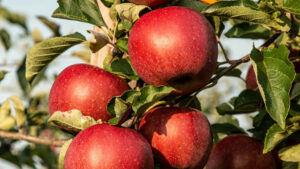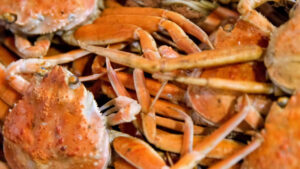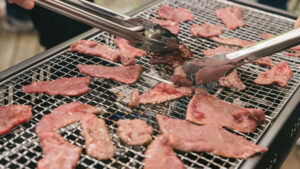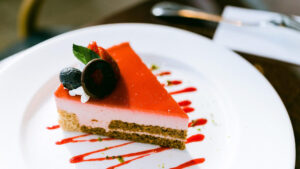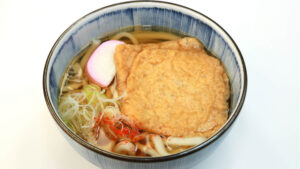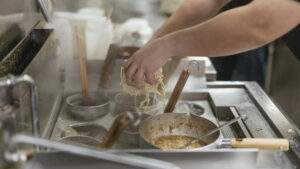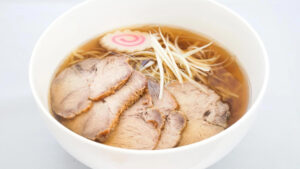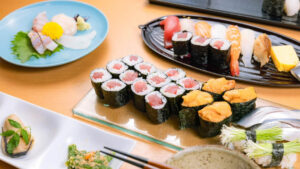Your culinary journey in Iwate begins with a tasting tour of the “Three Great Noodles.” Wanko soba, where lively chants keep the refills coming; Morioka reimen, a triumvirate of chewy noodles × clear, delicate broth × kimchi; and Jajamen, which you finish to your own taste. Beyond the noodles, there’s the rustic, nourishing dumpling soup Hittsumi; the fisherman-town luxury of the clear seafood soup “Ichigoni”; and the refined aroma and marbling of premium Maesawa beef—all proof that Iwate lets you savor the bounty of both mountains and sea at once.
This article packs practical, first-timer-friendly tips so you won’t get lost. Make the most of the season and the area, and bring home the “best bite” of your journey.
Contents
- 1 Conquer Iwate’s Three Signature Noodles: Wanko Soba, Morioka Reimen, and Jajamen
- 1.1 Wanko Soba (A “food entertainment” experience in Morioka & Hanamaki)
- 1.2 Morioka Reimen (The trio of chewy noodles × clear broth × kimchi)
- 1.3 Jajamen (The joy of DIY mixed noodles)
- 1.4 Hittsumi (A rustic soup of hand-torn wheat dumplings)
- 1.5 Sanriku Seafood & “Ichigoni”
- 1.6 Maesawa Beef (The allure of a celebratory cut)
- 2 Practical Travel Guide — Ordering, Seasons & Souvenirs
- 3 Season × Area × A Little Know-How: Make Every Bite in Iwate Even Better
Conquer Iwate’s Three Signature Noodles: Wanko Soba, Morioka Reimen, and Jajamen
Wanko Soba (A “food entertainment” experience in Morioka & Hanamaki)
Basic rules and etiquette (finish by closing the lid / what the calls mean)
“Wanko” refers to a small wooden bowl. In this Iwate-born custom, servers add bite-size portions of hot soba to your bowl one after another until you are full.
To signal you’re done, you close the bowl’s lid yourself; until then, servers will keep offering refills.
In Morioka, noodles are served at a lively pace with rhythmic calls like “Hai, janjan!” and “Hai, dondon!,” creating a festive, almost live-show feel.
In Hanamaki, said to descend from a feudal-lord hospitality style, the service is quieter (often without calls), with graceful, measured movements.
This style springs from the spirit of generous hospitality once called “otebachi,” and the essence is not competition but enjoying freshly cooked soba to your heart’s content. As a rough guide, 10–15 bowls ≈ one regular serving.
Use condiments—scallions, grated daikon, nori, and small side dishes—to vary the flavors as you go.
Note: Both Morioka and Hanamaki host annual “Wanko Soba” contests. At the Hanamaki event, a record of 258 bowls in 5 minutes (2016) was set—spectating can be a memorable part of your trip.
First-timer tips & budget pointers
- Set your pace: Start with smaller bites to find your rhythm. If you need a pause, just say “I’ll take a short break.” Don’t push yourself; it continues until you close the lid.
- Use “flavor breaks”: Rotate condiments and side dishes, and reset your palate with warm tea or water to keep everything delicious to the end.
- Let staff count: Many restaurants tally bowls for you—focus on the experience, not the number. Prioritize satisfaction over records.
- Budget smart: Prices and inclusions (experience sets, photo options, group menus) vary by shop. Check official info and book ahead to match your schedule and target bowl count. Confirm payment methods (cash/cashless) before you go.
Where to go & typical restaurant styles
- Morioka vs. Hanamaki: Choose Morioka for lively calls and energy; choose Hanamaki for quiet, ceremonial hospitality. Try both to feel how the same “wanko” experience changes by locale.
- Restaurant types:
- Traditional houses: Historic settings and relaxed service—great if you prefer a calm atmosphere.
- Experience-focused: Clear guidance for beginners and photo-friendly touches—popular with visitors and families.
- Group-ready: Plenty of seating for tours and company trips.
- Time with events: If your visit overlaps contest season, add a viewing stop. Enjoy the venue’s buzz and taste the “original” flavors before or after for a double slice of Iwate food culture.
Morioka Reimen (The trio of chewy noodles × clear broth × kimchi)
Know the traits of the noodles, broth, and kimchi
Morioka reimen is one of the “Three Great Noodles of Morioka,” alongside wanko soba and jajamen. Its most distinctive feature is the noodles: made by combining wheat flour with potato starch, they are slightly translucent with a sleek surface, a firm bite, and a uniquely springy chew.
The broth is typically a clear stock carefully simmered from beef or chicken (and sometimes pork), light on fat yet full of depth—an ideal match for the noodles’ elasticity.
Kimchi supplies heat and acidity that tighten the whole bowl. With toppings such as boiled egg, cucumber, fruit, and chashu (or sliced boiled beef), you get the crisp refreshment only a chilled noodle dish can deliver.
Its roots lie in Korean cold noodles, but the style evolved uniquely in Morioka, spreading through city yakiniku restaurants and becoming a standard from the mid to late Shōwa era.
From classic to modern—how to choose a shop
In Morioka, reimen is a staple on yakiniku menus, so you’ll find it widely across town. Flavor and atmosphere vary by shop type—pick to suit your schedule and preferences.
- Classic houses: pristine beef/chicken broth with clean finish, firm noodles,
and traditional plating—beloved by locals for decades. - Specialty shops: fine-tuned noodle thickness/firmness and chili blend; multiple
heat levels and options like kimchi on the side. - Modern styles: seasonal toppings, half portions, English menus, and cashless
payment—tourist-friendly touches.
Lunch hours can be crowded; in the evening, pairing reimen with grilled meats is a local favorite. For your first bowl, try mild heat with kimchi served on the side to appreciate the noodle-broth balance, then adjust the spice level on your second visit to explore the full range of Morioka reimen’s appeal.
Jajamen (The joy of DIY mixed noodles)
How to eat it—and finish with “chītantan”
Morioka jajamen features flat, udon-like noodles topped with savory meat miso, cucumber, and scallions. Inspired by the home-style zhajiangmian of northeastern China, it took root at postwar street stalls in Morioka and evolved into a “season-it-yourself” local favorite.
- Mix thoroughly first: Fold noodles, meat miso, and toppings together from the bottom so the sauce coats everything evenly.
- Tune the flavor little by little: Add grated ginger, vinegar, and chili oil (some shops also offer garlic) in small amounts.
If the taste gets too strong, balance it with a splash of hot noodle broth. - Close with “chītantan” (egg soup): After you finish the noodles, crack a raw egg into the bowl, add hot noodle broth, and mix well.
Season with a pinch of salt, vinegar, or pepper to taste—the result is a rich, comforting egg soup called 鶏蛋湯 (chītantan).
Note: Many shops start boiling fresh noodles after you order, so prep can take a bit.
It’s a slow-food local culture—meant to be savored.
Toppings & portion tips (for first-timers)
- Portion size: Start with small or regular. The noodles have a firm bite and are quite filling; level up to a large or a refill only if you need it.
- Meat miso intensity: The umami lives in the meat miso. For a richer finish, ask for extra meat miso (oimiso / 追い味噌).
Prefer lighter flavors? Dilute with hot broth as you go. - Heat & aroma: Chili oil adds spiciness, grated ginger brings freshness, and garlic adds depth. Start small and adjust to your liking.
- Allergies & dietary notes: Meat miso typically contains pork or mixed ground meats.
The “chītantan” finish uses a raw egg—you can request it without. When in doubt, ask about ingredients.
Hittsumi (A rustic soup of hand-torn wheat dumplings)
Ingredients and flavor variations (chicken, root vegetables, mushrooms)
“Hittsumi” is a regional soup from the Nanbu area (northern–central Iwate, around the Kitakami Basin) made by simmering hand-torn pieces of wheat dough. The dough is kneaded well and rested, then pinched off with the fingers and dropped into the pot. This extra kneading and resting gives it a firmer chew than suiton, with a smooth texture reminiscent of gyoza or wonton wrappers.
Broths and ingredients vary by household and locale. Inland versions commonly use chicken stock with root vegetables (carrot, burdock), scallions, and mushrooms. Along the coast, people sometimes crack in river crabs (mokuzugani) or other seafood for a “feast” style. Seasoning is typically soy sauce or salt, with some families opting for a miso base depending on the season. The vegetables and savory broth soak into the dumplings, creating a simple, nourishing flavor.
Where to try it — local restaurants, roadside stations, and hot-spring inns
You can find hittsumi around Iwate at places like these:
- Local cuisine restaurants (in town): Often served year-round. Chicken-based “classic” versions are common and easy to enjoy between sightseeing stops.
- Roadside stations & diners: Everyday-style bowls loaded with seasonal vegetables and local produce—perfect for road trips.
- Hot-spring inns & guesthouses: Appears as part of dinner courses, with strong regional touches like mushrooms and mountain vegetables, or crab stock along the coast.
Besides hittsumi, you may see regional names such as totte-nage (in the northern part of the prefecture) or
tsumeri (around the former Esashi area). If it’s not on the menu, try asking:
“Kyōdo ryōri no hittsumi wa arimasu ka?” (“Do you have hittsumi, the local dumpling soup?”).
Sanriku Seafood & “Ichigoni”
What is “Ichigoni”? A briny soup of sea urchin & abalone
A hallmark soup along the Sanriku coast (the Pacific side of Aomori and Iwate), Ichigoni features fresh sea urchin and abalone lightly simmered in dashi and finished with shredded shiso. Its origin is said to be a fishermen’s pot—tossing just-caught uni and abalone straight into a kettle and boiling them on the beach. In the Taishō era, the dish was refined as a restaurant-quality clear soup; the name “Ichigoni” (“strawberry stew”) is poetic: in a milky, opalescent broth, the golden uni appear like wild strawberries in morning mist.
On the palate, the uni melts with gentle sweetness while the abalone offers a pleasant bite; the depth of the sea fills the mouth, and the fragrance of shiso snaps the finish into focus. Even today it graces festive “hare” occasions—Obon, New Year, and weddings—across Sanriku.
Season & sourcing tips (Miyako, Kuji, Ofunato)
Sanriku’s waters, where cold and warm currents meet, are prime fishing grounds. With a simplicity that puts ingredients front and center, freshness is everything for Ichigoni.
- Season at a glance: Uni is best when shiso comes into season—early to mid-summer (around July).
Abalone fishing periods vary by local resource management, so check current availability on site. - Miyako: Known for uni with a pronounced rocky-shore aroma. Look for small hot-pots of “Ichigoni-style” soup at port eateries and in dinner courses at inns.
- Kuji: Famous for ama (women divers) culture; simple seasoning that highlights uni’s sweetness. Finding truly same-day catch is a stroke of luck.
- Ofunato: Markets and port diners brim with seasonal shellfish and seafood. Besides Ichigoni, check out other clear seafood broths and tide soups.
Maesawa Beef (The allure of a celebratory cut)
Cuts & recommended preparations (steak / sukiyaki)
Maesawa Beef is a branded wagyu from black-haired Japanese cattle raised in Maesawa, Ōshū City, Iwate. Only beef that meets designated standards and is distributed via JA Iwate Furusato may bear the name. Its hallmarks are ultra-fine marbling and a melt-in-the-mouth finish.
For steak—the purest way to enjoy the sweetness and aroma of the beef:
- Sirloin: The classic balance of rich fat and fragrance. Cook to medium-rare,
finish with just a little salt and pepper. - Ribeye (rib roast / rib loin): Juicy and deeply flavored; great for thick-cut steaks or roasts.
- Tenderloin (filet): Leaner, exceptionally tender; ideal for red-meat lovers.
- Rump / Ichibo (rump cap): Concentrated beefy umami in a mostly lean cut—keep the sear short.
For sukiyaki—silky slices in sweet–savory sauce, optionally dipped in egg:
- Chuck roll (shoulder loin): A great balance of marbling and depth; works with both
Kantō style (pre-made warishita) and Kansai style (sugar & soy directly in the pan). - Ribeye / Short plate (belly): Extra-tender, melt-in-the-mouth texture—perfect for a luxurious finish.
- Egg is optional: If you’re not used to raw egg, enjoy it without.
Quick tip: Avoid overcooking. Sear quickly over high heat, then rest the meat to lock in juices and aroma.
Practical Travel Guide — Ordering, Seasons & Souvenirs
Best Seasons & Area Strategy
Seasonal Ingredients Calendar (Spring–Summer–Autumn–Winter)
Spring (Mar–May)
- Mountain bounty: Sansai (wild greens) such as fukinoto (butterbur buds), kogomi (ostrich fern), and tara-no-me (angelica shoots). Pair spring vegetables with hittsumi for a gentle flavor.
- Seafood: Fresh wakame (excellent for shabu-shabu), scallops, and other shore harvests.
- Noodles: On chilly days, warm up with wanko soba.
Summer (Jun–Aug)
- Seafood: Sanriku stars—uni (sea urchin), abalone, and hoya (sea pineapple). Savor peak-season intensity with ichigoni and kaisendon (seafood bowls).
- Noodles: Authentic Morioka reimen; ask for heat level adjustments and kimchi on the side.
- Meat: Charcoal-grilled Tankaku beef and local BBQ that pairs well with beer.
Autumn (Sep–Nov)
- Seafood: Autumn salmon and ikura, fatty Pacific saury (landings vary by year), and assorted shellfish.
- Mountain bounty: A variety of mushrooms and new-season soba; deepen hittsumi with mushrooms and root vegetables.
- Meat: Maesawa Beef sukiyaki or steak for a celebratory feel.
Winter (Dec–Feb)
- Seafood: Oysters, cod, and winter yellowtail—fish that get tastier as the weather turns colder.
- Hearty soups: Body-warming hittsumi; along the coast, clear tide soups and hot pots.
- Noodles: Snowy scenery plus hot wanko soba is a highlight of winter travel.
Souvenirs & Takeout
Classics: Nanbu Senbei / Kamome no Tamago / Kaiho-zuke
Nanbu Senbei: Simple crackers from the Nanbu region. A wide variety—sesame, peanut, miso, bean, salted sesame—and many are individually wrapped and shelf-stable, perfect for sharing. Firm, crunchy texture pairs well with tea. Be sure to check allergen labels (wheat, peanuts, sesame, etc.).
Kamome no Tamago: An Iwate staple—soft bean paste and sponge cake coated in white chocolate. Comes in multiple sizes (mini to large) and seasonal flavors, great for offices. Usually store at room temperature (avoid heat and direct sun). Note allergens (egg, dairy, wheat).
Kaiho-zuke: A Sanriku “rice companion” of salmon roe, uni, shellfish, and more—rich ocean umami you can spoon over hot rice. Typically keep refrigerated/frozen; for long carry times use ice packs and an insulated bag. Mind import restrictions when traveling abroad (rules vary by country/region).
Where to buy? Station malls, airports, roadside stations, and department-store local-goods sections are convenient.
How to Choose Take-Home Sets: Reimen & Jajamen
Type guide
- Room-temperature (dried noodles): Long shelf life and lightweight. Reimen may be a touch less springy, but it’s ideal for overseas travel. For Jajamen, retort pouches of meat miso are easy to handle.
- Semi-fresh / fresh (refrigerated): Closer to the shop texture but shorter best-by. Not great for long flights or peak summer—consider domestic courier shipping.
- Frozen: Highest fidelity but heavier and prone to thawing. Bring a cooler bag and ice packs.
Labels to check
- Contents: What’s included (noodles, soup, kimchi / meat miso).
- Portions: How many servings.
- Heat level: Chili sauce for reimen; chili oil for Jajamen.
- Storage & best-by: Refrigerated or room temp; handling after opening.
- Allergens: Wheat, egg, soy, sesame, meat/seafood, etc.
Season × Area × A Little Know-How: Make Every Bite in Iwate Even Better
The rules for a can’t-miss Iwate food trip are simple. Compare the Three Noodles on their home turf (Wanko Soba = finish by closing the lid; Reimen = adjust heat and ask for kimchi on the side; Jajamen = mix well → fine-tune the flavor → finish with “chītantan”). For the mountains, choose Hittsumi; for the sea, choose Ichigoni; for meat, savor Maesawa Beef for a celebratory touch. Plan around season (e.g., summer uni, winter oysters) and the day’s availability, and for popular spots, shift your mealtime or reserve ahead. For souvenirs, balance room-temperature classics + refrigerated “treat” items, and check storage, shipping, and carry-on rules.
With its seasons constantly reshaping what’s on the table, Iwate is a place where you can discover a “first taste” every time you visit. On your next trip, go update today’s best bite.
